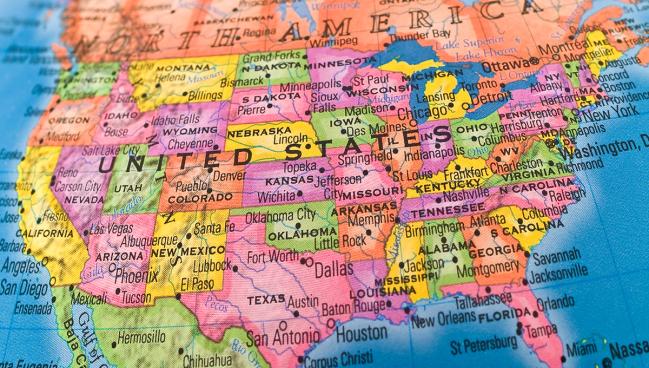Millions of Black Americans Live in ‘Cardiology Deserts’
A report from GoodRx shows too few cardiologists in many US counties, but this is just the tip of the iceberg.

Over 2 million Black Americans live in counties without a single cardiologist providing care, a new report from the company GoodRx shows. Taking into account areas with some cardiologists in practice, but not enough to meet the number of patients—dubbed “cardiology deserts”—that number rose to nearly 17 million.
Together, the numbers “paint a pretty clear picture,” said Tori Marsh, MPH, Director of GoodRx Research, who told TCTMD that this report follows others from their group quantifying various healthcare deserts where access is limited. “The research team is always focused on unearthing trends and consumer experiences around healthcare: equity, accessibility, affordability, all of that,” she explained. For Black Americans in particular, “the data kind of jumped out at us, and it felt like we needed to do the full due diligence on it.”
Going into their project, she said, they wanted to provide localized information by looking at the county level and identifying regions particularly in need of better access.
Willie Lawrence, MD (Corewell Health, Benton Harbor, MI), who co-authored the American Heart Association’s 2021 call to action on structural racism, observed that the number of providers, or the lack thereof, is just one of many contributors to inequities in healthcare. As for the current report, ”it’s hard to know for certain whether their methodology allows you to conclude that this is an independent variable and that it’s not related to all the other confounding barriers,” including social determinants of health, he said.
Still, Lawrence said, the GoodRx research “is a good starting point for discussion.”
Monika Safford, MD (Weill Cornell Medicine, New York, NY), also commenting on the results for TCTMD, described the study as “purely descriptive” rather than novel. She said its strength instead lies in ”shining a light on the maldistribution of resources and need,” a phenomenon Safford has encountered in her own research on social determinants of health.
“I think we need to just keep hammering this message home: we need to find a way to better distribute healthcare resources matched to the needs of the population, especially because Black people have way worse health outcomes, including cardiovascular outcomes,” emphasized Safford. There are “huge disparities in the care that they’re receiving and the outcomes that they suffer, and these findings shed light on one contributor to that, which is access to the services that could potentially help them.”
Raising awareness is important, she added. “The more we are reminded of these inequities the better, so that we can work together to fix them.”
Distance and Density
GoodRx is a company that, among other things, offers tools for providers to streamline care, discounts for consumers purchasing prescription drugs, and a telehealth platform.
For their new report, the researchers identified around 33,500 cardiologists at almost 40,000 practice sites. Yet 46% of counties across the United States lacked a cardiology practice—22 million Americans (including 2.46 million Black individuals) had no cardiologists located in their county.
An interactive map contained in the report highlights how, for rural residents in particular, lengthy commutes to the nearest cardiologist could be prohibitive.
However, distance is not the only factor, Marsh pointed out. “We really wanted to look not only at drive time and mileage to the nearest cardiologist, but also density. You might live in a really big city and have a cardiologist right next door to you, but if you’re in a big city and that cardiologist has hundreds of thousands of patients and the wait time is really long, you’re not going to have full access to that cardiologist.”
A total of 14.4 million Black people lived in a county where the population-to-provider ratio exceeded the national average of 9,895 residents.
For counties where Black Americans made up a sizeable slice of the population—at least 14.2%, the national average—the worst shortages were seen in counties located in Georgia, Mississippi, Virginia, Alabama, and Louisiana. In these counties, residents on the whole had high CV risk, as evidenced by factors like diabetes, obesity, smoking, physical inactivity, alcohol consumption, and unhealthy eating.
Tools for Change
The GoodRx report lists several ideas for how to encourage equitable access to rural communities, with an eye toward the US South:
- Greater use of consultant clinics
- More funding for programs that encourage early-career physicians to practice in rural areas
- More funding for studies aimed at understanding rural/urban health inequities
- Increased attention to health education at a community level
All agreed it’s difficult for individual cardiologists to tackle the systemic issue of healthcare access.
On a smaller scale, clinicians who are aware that their patient has a long commute could perhaps come up with a creative solution, like telehealth visits, to maintain a connection, Marsh suggested. However, “a lot of this is at the policy level, and it’s not going to be solved, unfortunately, by one provider who’s willing to work with their patients and meet them where they are.”
These inequities in care do speak to a wider problem, Safford agreed. “The fundamental cause of this doesn’t rest on the shoulders of individual cardiologists—that has to be said at the outset It’s the way we have chosen to structure our healthcare system: this sort of laissez-faire approach that gives everybody the chance to practice wherever they want. And where do people want to live? Well, 90% of people want to live in larger metropolitan areas. Only 10% or so of the US population lives in the most rural areas, and some of these counties with the most need are very rural.
“Are you going to coerce people to practice in places where they don’t want to be? You can’t do that,” she continued. “However, I think there are several things that can be advocated for,” such as programs offering loan forgiveness to specialists according to the need of the community where they practice.
Beyond this, “cardiologists can advocate for change, for sure. I think as physicians we don’t do enough advocacy,” she added.
But Safford said that in terms of a more immediate, practical solution, telehealth could prove useful. Technology can allow specialists clustered in certain regions to connect with local primary care practices in underserved areas, she suggested. “That sort of infrastructure is something we should be seriously talking about.”
For his part, Lawrence serves as medical director for Corewell Health’s Center for Better Health and Wellness, a small but growing facility in Benton Harbor, MI, initially funded to address the COVID-19 pandemic. Now, the Center is aiming to expand healthcare access more generally in the city, which is 87% Black, and to confront social determinants of health.
Transportation, for example, can be a problem even in an urban area, he noted. “People have trouble going 5 miles without a car.” And even in major cities where cardiologists abound, the reality of segregated neighborhoods can mean that patients would have to cross a river, train tracks, or other obstacle to reach care on the other side of town.
Lawrence stressed it can’t be assumed that cardiologists, many of whom see patients only once they are sick enough to be seen in a hospital setting, in and of themselves are enough to improve the health of the community. Alluding to the “cliff analogy,” he said “the basic function of hospitals is to wait for people to and hit the ground. And they do a real good job of fixing you.” However, to truly improve health, “you need to do some other things like put a net up and catch them before they hit the ground” or, even better, “put up a fence so they don’t fall in the first place,” he explained.
“You have to get upstream of disease,” said Lawrence.
Caitlin E. Cox is News Editor of TCTMD and Associate Director, Editorial Content at the Cardiovascular Research Foundation. She produces the…
Read Full BioSources
GoodRx. More than 16 million Black Americans live in counties with limited or no access to cardiologists. Published on: May 2, 2023. Accessed on: May 2, 2023.
Disclosures
- Safford reports founding the company MedExplain, which creates patient education materials.





Comments